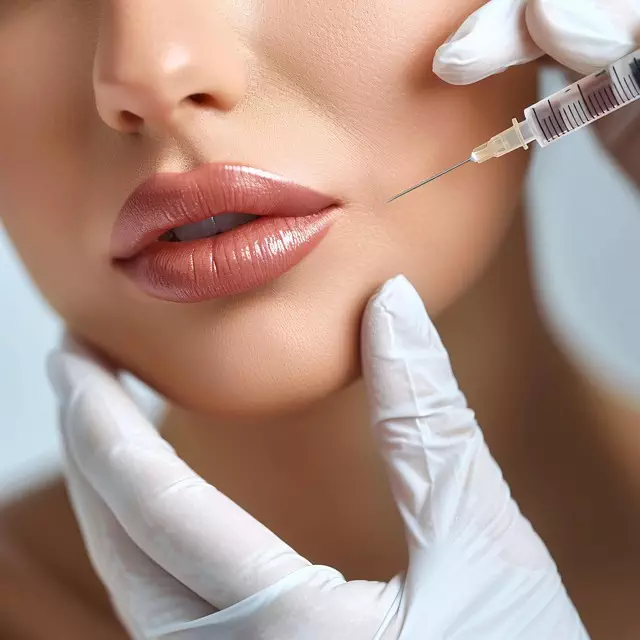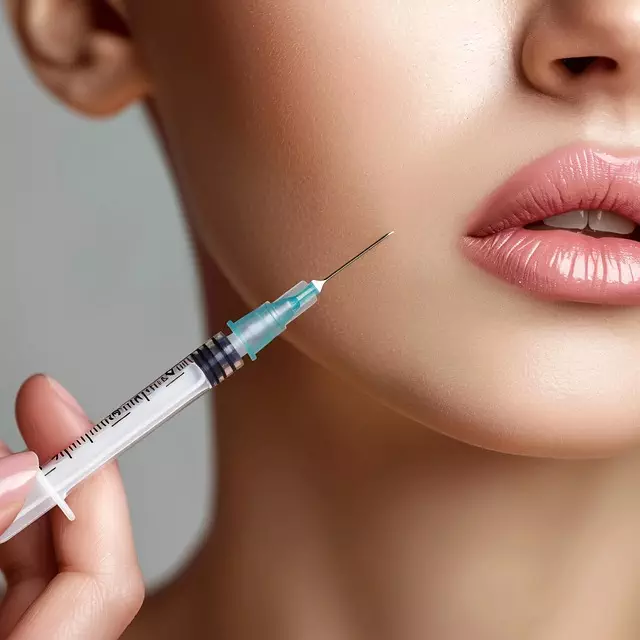This text compares Botox and dermal fillers for fine line prevention and treatment. Key differences include:
Mechanism of action: Botox paralyzes muscles to prevent dynamic wrinkling, while dermal fillers inject hyaluronic acid or collagen to fill static wrinkles.
Effectiveness: Both are effective but serve different purposes; Botox focuses on preventing new lines, while dermal fillers offer immediate, longer-lasting solutions.
Side effects and downtime: Botox has temporary redness/swelling, whereas dermal fillers have minimal downtime but potentially higher side effects like lumpiness.
Maintenance: Botox requires regular touch-ups (every 3-6 months), while dermal filler top-ups can be less frequent (up to 2 years).
The optimal choice depends on individual needs, skin type, and budget.
“As we age, our skin undergoes natural changes, leading to the formation of fine lines and wrinkles. Among the most sought-after solutions in dermatology, Botox and dermal fillers offer promising avenues for preventing and reducing these signs of aging. This article delves into the intricate world of these cosmetic treatments, exploring how Botox can temporarily paralyze muscles to prevent dynamic wrinkles, while dermal fillers provide immediate volume restoration. We’ll dissect their unique mechanisms, compare them with SEO keywords ‘Botox vs Dermal Fillers’ in mind, and guide you through choosing the best treatment for your skin’s needs.”
Understanding Fine Lines and Their Causes

Fine lines, often the first visible signs of aging, are a natural part of the skin’s aging process. They can appear as subtle wrinkles or shallow creases around the eyes, mouth, and forehead. While lifestyle factors like sun exposure, smoking, and stress contribute to their formation, the primary cause is loss of elasticity in the skin due to declining production of collagen and elastin. These proteins are responsible for keeping skin firm and supple.
When it comes to combating fine lines, both Botox and dermal fillers offer effective solutions, each with its advantages. Botox, a neurotoxin, works by temporarily paralyzing facial muscles, reducing dynamic wrinkling caused by expressions like frowning or smiling. On the other hand, dermal fillers enhance the skin’s structure by injecting hyaluronic acid or collagen-based products into the affected areas to fill in and smooth out fine lines and wrinkles from the surface. The choice between Botox and dermal fillers depends on individual preferences, specific concerns, and desired outcomes.
The Role of Botox in Preventing Fine Lines

Botox has established itself as a leading treatment for fine line prevention, offering a non-invasive approach to skincare. Unlike dermal fillers, which plump and enhance specific areas, Botox focuses on relaxing facial muscles that cause dynamic wrinkles. These dynamic wrinkles are formed by repeated muscle contractions over time, leading to the development of fine lines and wrinkles around the eyes, forehead, and mouth.
By injecting small amounts of botulinum toxin into these areas, Botox temporarily blocks nerve signals to the muscles, preventing them from contracting as strongly. This action smooths out existing fine lines and significantly reduces the formation of new ones. As a result, individuals can achieve a more youthful appearance and maintain it for several months with regular treatments.
How Botox Works to Relax Muscle Activity

Botox works by relaxing muscle activity, which is key in preventing and reducing the appearance of fine lines and wrinkles. When injected into specific areas, Botox blocks nerve signals that cause muscles to contract. This results in a decrease in dynamic wrinkle formation, particularly around the eyes, forehead, and mouth. Unlike dermal fillers that add volume and fill in wrinkles, Botox focuses on softening them by preventing muscle contractions that lead to creasing and folding of the skin.
In contrast to dermal fillers, which are often used for deeper static wrinkles, Botox is more effective for treating fine lines and the early signs of aging. This makes it a popular choice among those looking to maintain youthful-looking skin without the need for more invasive procedures. Its non-surgical nature and quick recovery time make it an appealing option for individuals who want to prevent or temporarily pause the visible effects of aging.
Dermal Fillers: An Alternative Approach

When considering prevention and treatment for fine lines, Botox and dermal fillers are two popular options often at the forefront of discussions. While both have their merits, understanding the differences between them is key to making an informed decision.
Botox stands as a well-established method, utilizing a neurotoxin that temporarily paralyzes facial muscles, reducing the appearance of wrinkles. On the other hand, dermal fillers offer a more direct approach by injecting hyaluronic acid or collagen into the skin, plumping and filling in fine lines and wrinkles from within. In terms of Botox vs dermal fillers, each has unique effects; Botox provides a smoother, more relaxed expression, while dermal fillers deliver a fuller, more voluminous result. The choice depends on individual preferences and the specific concerns one wishes to address.
Key Differences Between Botox and Dermal Fillers

When considering treatments for fine line prevention, understanding the key differences between Botox and dermal fillers is crucial. Both are popular choices in the aesthetic industry, but they work differently to address signs of aging. Botox, a protein derived from bacteria, temporarily paralyzes muscles, smoothing out dynamic wrinkles caused by facial expressions. This makes it ideal for preventing new lines from forming and softening existing ones, especially around the eyes and forehead.
On the other hand, dermal fillers are made from hyaluronic acid or collagen and add volume to the skin by filling in depressed areas. They instantly plump up fine lines and wrinkles, providing a more youthful appearance. While Botox focuses on preventing future wrinkle formation, dermal fillers provide immediate results. The effect of Botox lasts for several months, whereas dermal filler results can last anywhere from 6 months to 2 years, depending on the product used.
Choosing the Right Treatment: Factors to Consider

When considering fine line prevention treatments, it’s crucial to understand the differences between options like Botox and dermal fillers. Both have their merits, but cater to distinct needs. One key factor is the type of result you’re aiming for. Botox is an excellent choice for temporarily relaxing muscles and preventing dynamic lines (those that form when you smile or frown). It’s ideal for a natural, subtle appearance. Dermal fillers, on the other hand, are designed to add volume and enhance static lines, providing a more pronounced and long-lasting effect.
Another consideration is your skin’s sensitivity and overall health. Botox treatments involve injecting a neurotoxin into the skin, while dermal fillers use hyaluronic acid or other substances. The former may cause mild temporary side effects like bruising or swelling, whereas the latter often result in minimal downtime. Your budget also plays a role; filler prices tend to be higher than Botox for similar treatments. Ultimately, the right choice depends on your specific goals, skin type, and financial considerations.
Safety, Side Effects, and Recovery Times

When considering Botox for fine line prevention, it’s crucial to understand safety, side effects, and recovery times, especially when compared to dermal fillers. Unlike dermal fillers that use substances like hyaluronic acid to add volume, Botox works by paralyzing muscles to prevent dynamic wrinkling. This makes it a safer option for fine lines as it doesn’t involve introducing foreign substances into the skin.
While Botox is generally safe and well-tolerated, side effects can include temporary redness, swelling, or bruising at the injection site. In rare cases, patients may experience headaches, muscle weakness, or difficulty swallowing. Recovery time is typically brief, with most people resuming their normal activities within a day. Unlike dermal fillers that might take a few days to settle and show final results, Botox effects become visible within a week and last for several months, offering a more gradual yet long-lasting solution when compared to Botox vs dermal fillers for fine line prevention.
Maintenance and Follow-up Care

After your initial Botox or dermal filler treatment for fine line prevention, proper maintenance and follow-up care are essential to maximize results and ensure longevity. Unlike Botox, which typically wears off after 3-6 months, dermal fillers can last anywhere from 6 months to 2 years, depending on the type used. Regular touch-ups are necessary to maintain the desired effect, with frequency varying based on individual metabolism and lifestyle factors.
When it comes to maintenance, hydration is key. Staying well-hydrated supports skin health and elasticity, which can help extend the life of your treatment results. Additionally, sun protection is crucial; using a broad-spectrum sunscreen daily helps prevent further damage that could accelerate the appearance of fine lines and wrinkles. Comparing Botox vs dermal fillers for maintenance, regular injections of Botox are generally required to maintain smooth skin, while dermal filler top-ups can be less frequent, depending on the product used.
